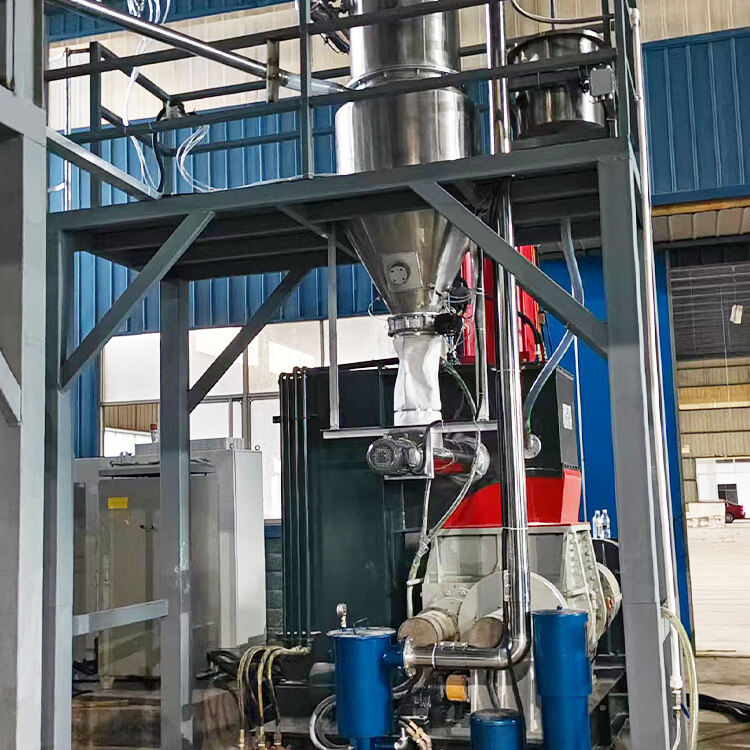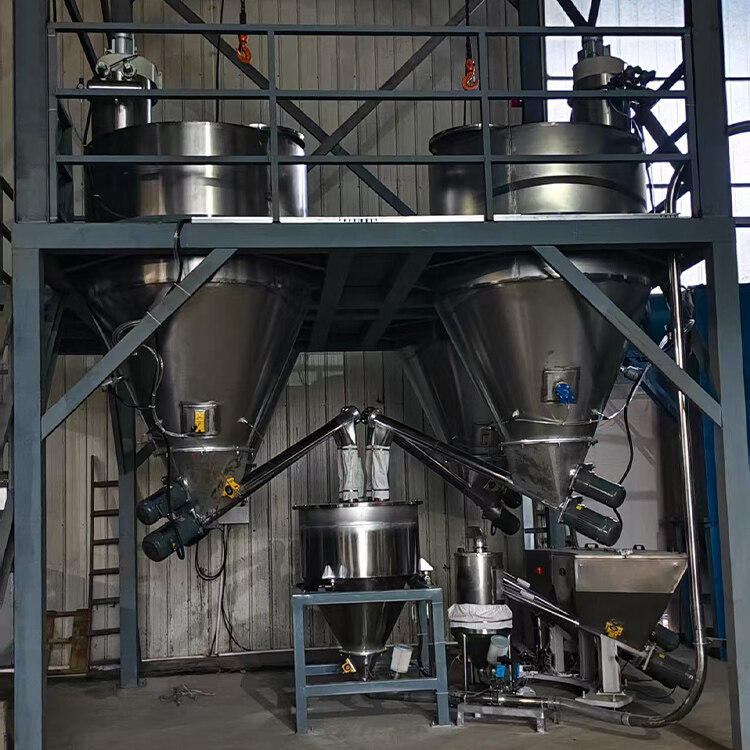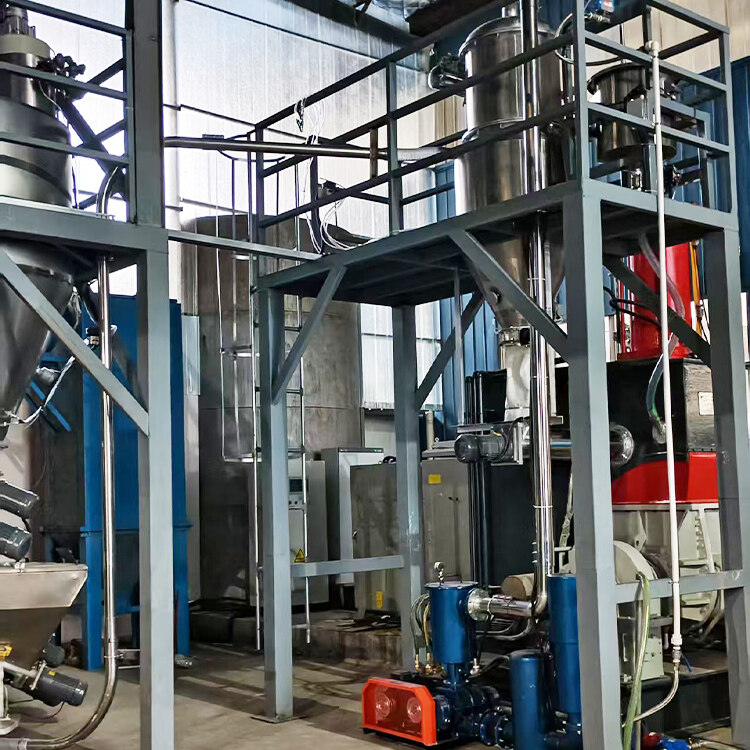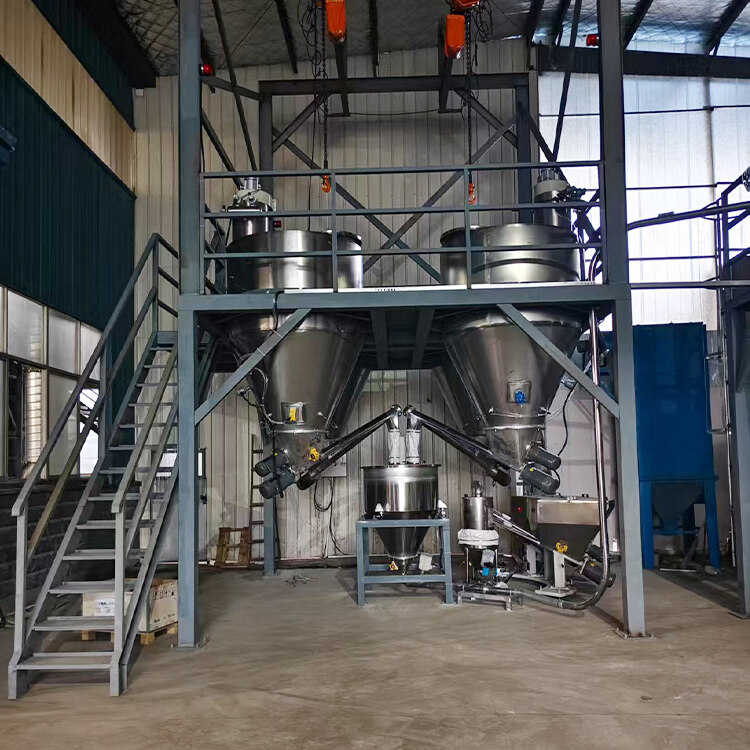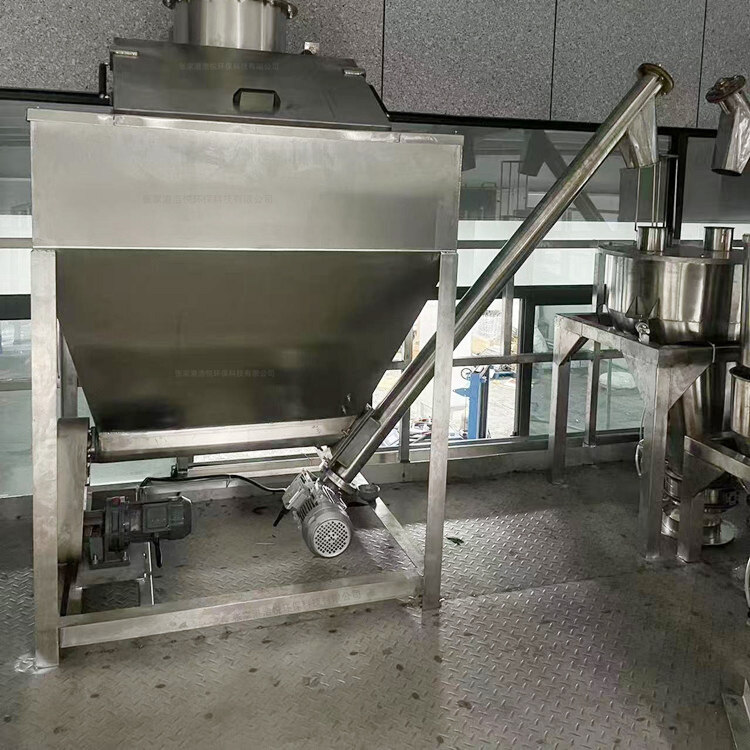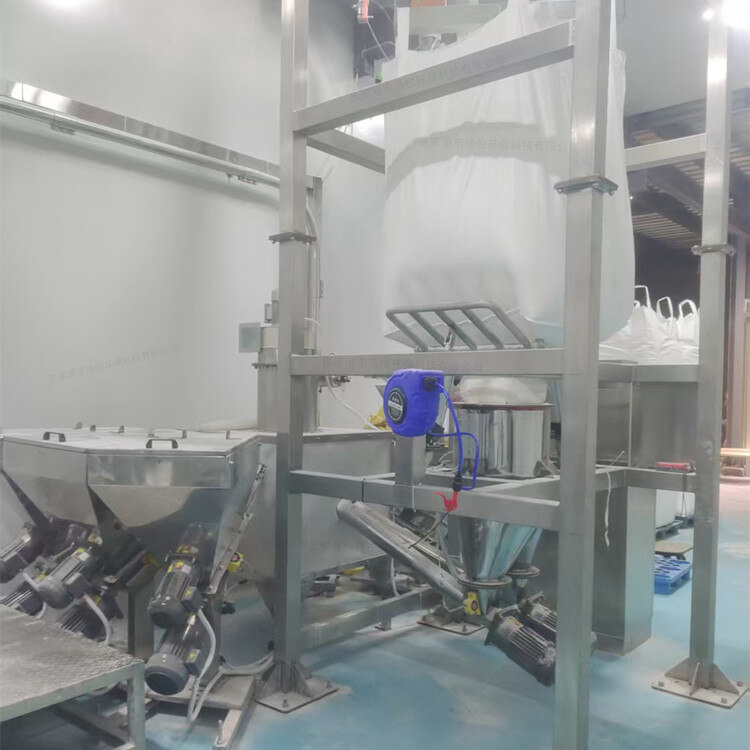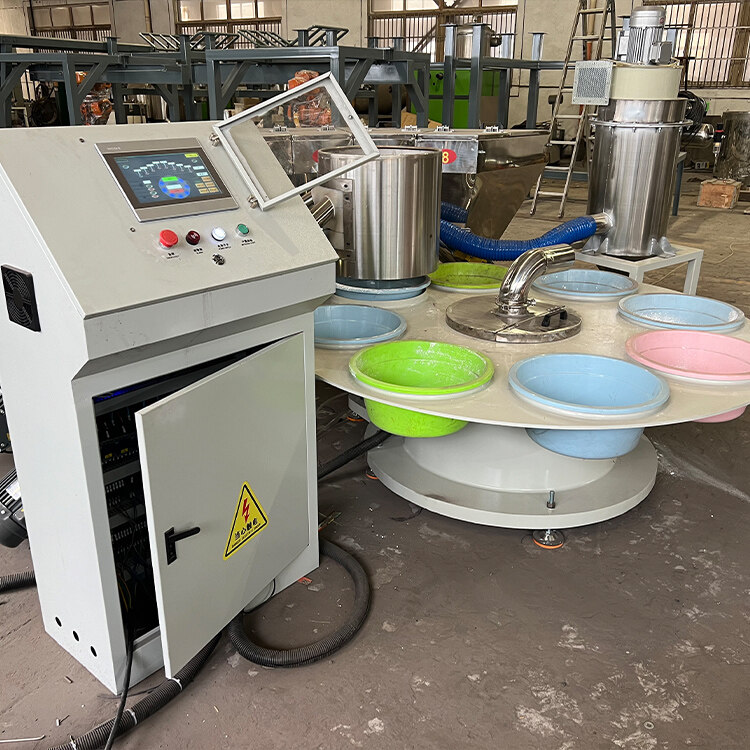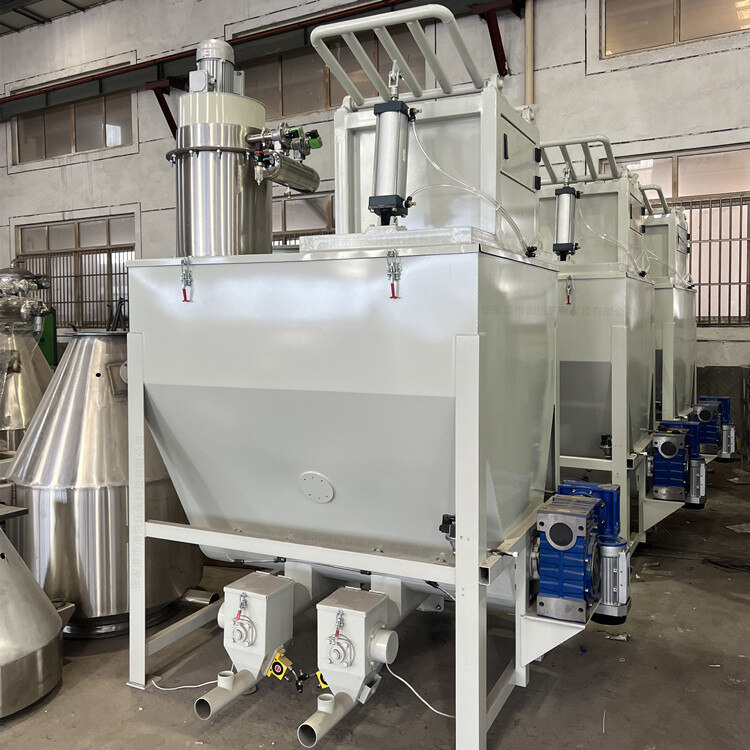- Introduction to automatic batching machine and fully automatic batching machine equipment
- The powder metering system tells you about the introduction of the mixing and drying machine
- 1000kg vacuum feeding machine
- Fully automatic small material batching system
- Research on Innovation of Automatic Weighing Machine Technology
- Design and operation of automatic batching system using PLC, industrial computer and frequency converter
Rubber powder automatic feeding system
- Category:Centralized feeding system
- Hits:155次
- Release Date:2025-06-23
- Share:
- Inquiry
- Details
1、 Core functions and technological advantages of the system
Efficient dust-free conveying
Rubber powder has the characteristics of small particle size (usually between 20-200 mesh), low density (about 1.2-1.5g/cm ³), and easy adsorption. Traditional manual feeding can easily lead to dust flying and material loss. The automatic feeding system adopts fully enclosed pipeline transportation, combined with negative pressure pneumatic conveying, spiral conveying and other technologies, to control the dust concentration in the workshop below 10mg/m ³, which meets occupational health standards; Simultaneously reducing material waste and improving conveying efficiency by 30% -50%.
Accurate measurement and continuous feeding
The system is equipped with high-precision weighing sensors or volumetric measuring devices, with a measurement accuracy of ± 0.5% - ± 1%. It can achieve continuous and stable feeding of rubber powder according to the production needs of downstream equipment such as internal mixers and open mixers. For example, during the mixing process of tire rubber, the system can accurately deliver additives such as carbon black and sulfur according to the formula to ensure uniform performance of the rubber.
Intelligent Control and Security Protection
Integrated PLC control system and touch screen operation interface, supporting remote monitoring and parameter adjustment; Built in material level monitoring, blockage alarm, overload protection and other functions. When pipeline blockage or low material level in the silo occurs, the system will automatically shut down and issue an alarm. In addition, in response to the flammable nature of rubber powder, some systems are equipped with explosion-proof motors, anti-static pipelines, and grounding devices to avoid safety hazards caused by static electricity.
2、 System composition and working principle
1. Core equipment unit
Storage unit
Storage bin: made of stainless steel or carbon steel material, with a capacity of usually 5-50 cubic meters. The storage bin is designed with a conical bottom and a cone angle of 45 ° -60 ° to prevent material accumulation; The top is equipped with a pulse bag filter, which effectively filters over 99% of the dust.
Material level monitoring device: Real time feedback on the inventory of materials in the warehouse and triggering automatic replenishment signals through rotary, heavy hammer, or radar level gauges.
transport unit
Negative pressure pneumatic conveying system: Using a Roots vacuum pump to generate negative pressure ranging from -20kPa to -60kPa, rubber powder is transported from the storage bin to the metering bin through pipelines. This method is suitable for long-distance (up to 100 meters) and multi-point transportation, with good pipeline sealing and no dust leakage.
Spiral conveyor: using U-shaped groove body and shaftless spiral blades, suitable for short distance (<15 meters) transportation, especially suitable for rubber powder with poor fluidity and easy agglomeration. The surface of the blade is polished to reduce material adhesion.
Vibration conveying trough: Driven by a vibration motor, the material slides along the trough, commonly used for short-range feeding from the measuring bin to downstream equipment. It can be matched with a frequency converter to adjust the conveying speed.
unit of measurement
Weight loss measuring scale: It calculates the discharge amount by real-time weighing the weight change of the silo, with an accuracy of ± 0.5%. It is commonly used for precise dispensing of small dosage additives.
Volumetric metering device: using a rotary valve or screw metering pump to transport materials according to a fixed volume, suitable for continuous feeding of large quantities of rubber powder, with lower cost but slightly lower accuracy (± 1% - ± 2%).
control system
PLC+touch screen: Operators can set parameters such as conveying volume, conveying speed, material level threshold, etc; The system displays real-time device operating status, fault codes, and historical data.
Data Interaction Interface: Supports integration with MES systems to achieve real-time uploading and tracing of production data, facilitating enterprise optimization of production processes.
2. Workflow
Material storage: Rubber powder enters the storage bin through the ton bag unloading station or manual feeding port, and the dust collector synchronously starts to adsorb dust.
Automatic conveying: The PLC system starts the negative pressure fan or screw conveyor according to the downstream equipment requirements to transport the materials to the measuring bin.
Accurate measurement: The measuring device weighs or measures the volume of rubber powder according to the preset formula to ensure that the conveying volume meets the process requirements.
Continuous feeding: The measured materials are evenly fed into equipment such as internal mixers and open mixers through vibrating conveyors or spiral feeders.
Intelligent monitoring: The system monitors parameters such as material level, conveying pressure, and motor current throughout the entire process, and automatically alarms and shuts down in case of abnormalities.
3、 Typical application scenarios
Tire manufacturing industry
In the tire rubber mixing process, the automatic feeding system accurately delivers carbon black, white carbon black, rubber additives, etc. to the internal mixer according to the formula, ensuring stable vulcanization performance of the rubber material; At the same time, reduce the pollution of dust to the workshop environment and improve the working conditions of workers.
Recycled rubber processing
The system can achieve full process automation from storage, transportation to molding of rubber powder after crushing waste tires, avoiding the risk of dust inhalation caused by manual contact and improving the uniformity of recycled rubber product quality.
Production of rubber products
In the production of products such as sealing strips and rubber shoe soles, the system quickly switches material conveying according to different formulas to meet the flexible production needs of multiple varieties and small batches.
4、 Technological development trends
Intelligent upgrade: Introducing AI algorithms to optimize transportation paths and measurement strategies, and achieving remote diagnosis and predictive maintenance of devices through the Internet of Things.
Green and energy-saving: Developing low-energy transportation technologies (such as variable frequency control fans), using renewable materials to manufacture pipeline components, and reducing system operating costs.
Modular design: supports rapid disassembly and functional expansion of equipment, such as increasing the number of measuring compartments to adapt to the transportation of more types of rubber additives.
The automatic feeding system for rubber powder has become an indispensable key equipment in the modern rubber industry due to its high efficiency, precision, and environmental friendliness. In the future, with the continuous innovation of technology, this system will further develop in the direction of intelligence and greening, providing strong support for the high-quality development of the rubber industry.


